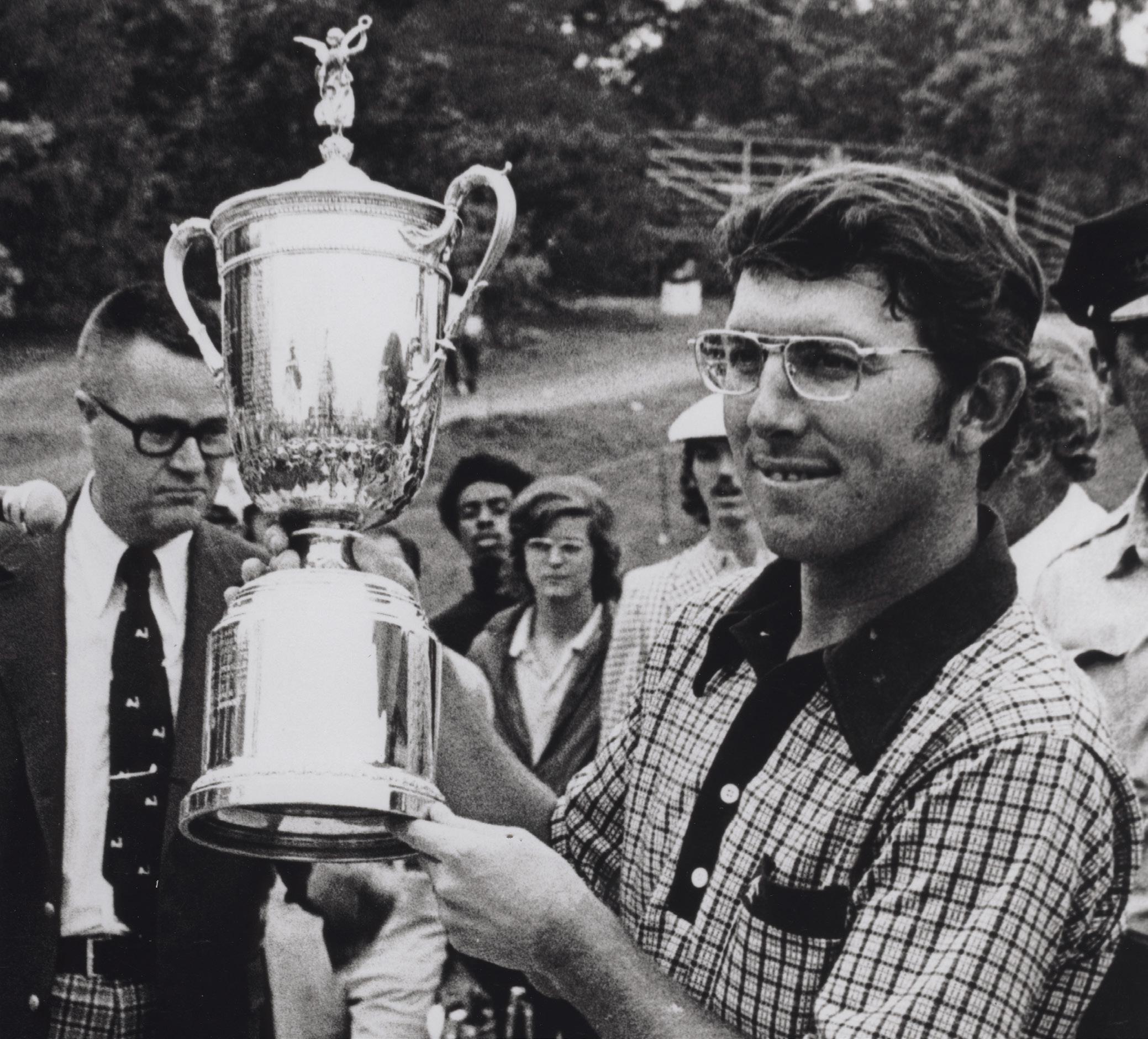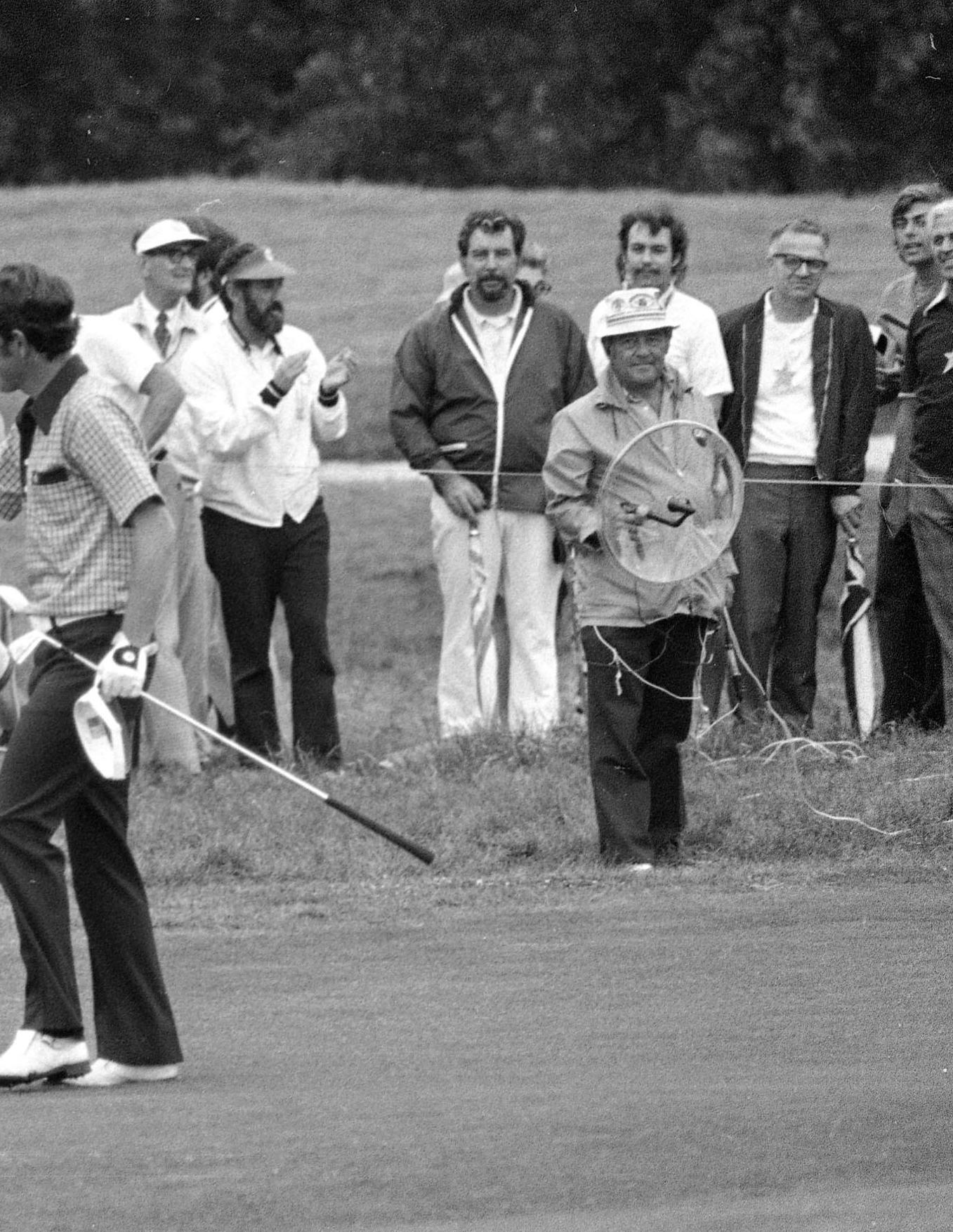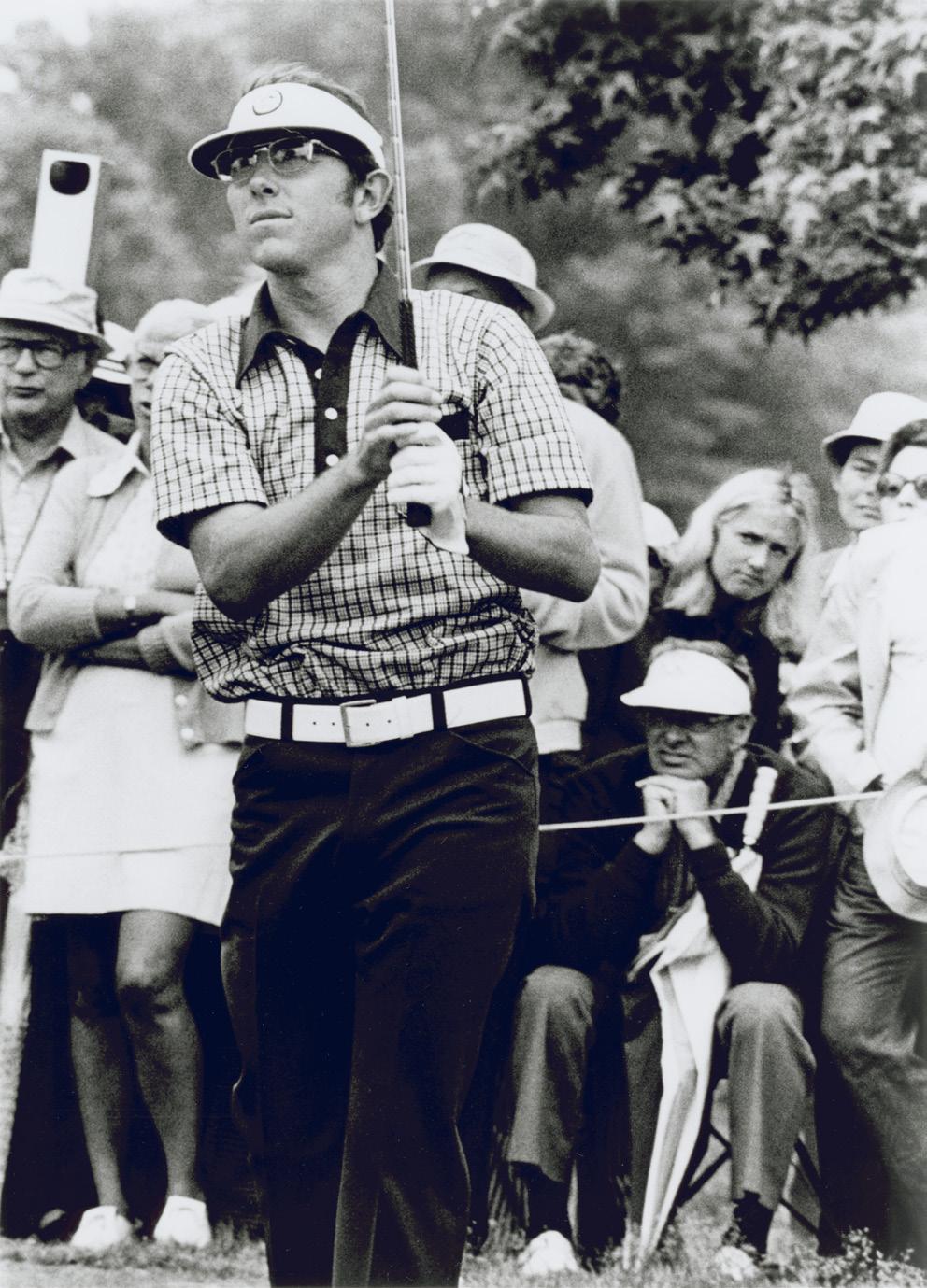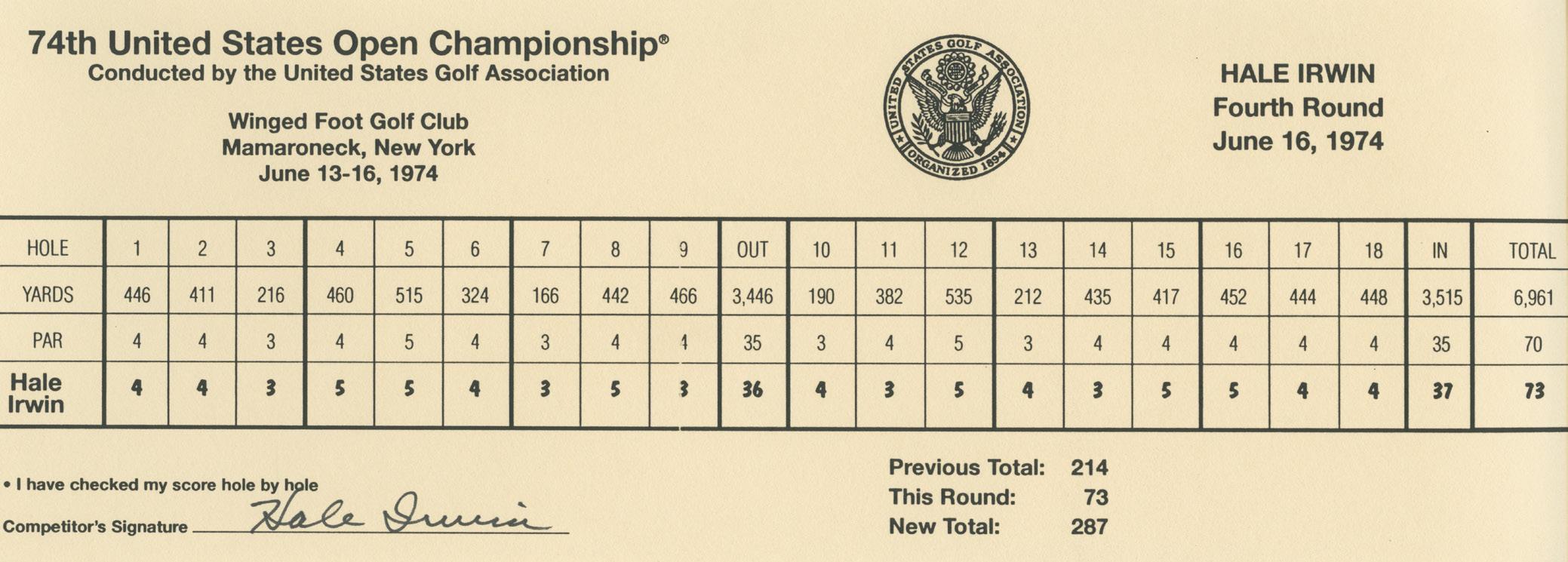
6 minute read
MASSACRE MEMORIES
MASSACRE
MEMORIES

Photo shows Hale Irwin holding the trophy after winning the 1974 U.S. Open held at Winged Foot Golf Club, (West Course), Mamaroneck, N.Y. Copyright Unknown/Courtesy USGA Archives.
Hale Irwin reflects on his 1974
U.S. Open win at Winged Foot, referred to as “The Massacre at Winged Foot,” and explains why there is no comparing the famed track to this year’s setup for the 2020 Championship.
by Pete Kowalski
Special to the Arizona Golf Association Hale Irwin is an American heartland guy.
Born in Joplin, Mo. and raised in Kansas and Colorado, Irwin maintains his strong common-sense roots that bred an intensity and tenacity which forged his will to win three U.S. Open titles between 1974-1990, the last one at 45 and he remains the oldest winner.
While listing Paradise Valley as his home address, he also treasures their home in St. Louis, where he raised two children with this wife, Sally.
Never flashy but remarkably consistent,
Irwin, who turned 75 in June, was a decorated football player at the University of Colorado and won the 1967 NCAA individual title in golf. He totals 20 PGA Tour wins and holds the PGA Tour Champions mark with 45 victories in a career that includes membership in the World Golf Hall of Fame and places on five Ryder Cup and one Presidents Cup teams.
For further career perspective, with four U.S. wins each only Willie Anderson, Bobby Jones, Ben Hogan, and Jack Nicklaus have more than Irwin and Tiger Woods matched his total with the ‘expect anything different’ performance at Torrey Pines in 2008.
Irwin played in 34 U.S. Opens and logged more rounds in the ‘National Open’ – 120 – than anyone other than Nicklaus.
The upcoming U.S. Open at Winged Foot Golf Club in New York’s northern suburbs and his deserved place among the legends of golf provides the perfect segue for Irwin’s reflections on the first of his U.S Open championships in 1974 at the famed A.W. Tillinghast West Course, which he calls ‘as far as golf course preparation and presentation to the players, the hardest I have ever seen.”
Irwin, who has not seen Winged Foot since the restoration by Gil Hanse, says: “I find it hard to believe it will be any harder with greens and the bunkering.”
He stresses that an apples-to-apples comparison from the 1974 U.S. Open to the 2020 U.S. Open does not work.
“It’s not the same game we played in ’74,” Irwin said. “Whatever they encounter at Winged Foot regardless of changes (made by Hanse) you might as well be playing a different golf course with different equipment because nothing can apply.
Given the equipment differences and the distance the players can hit the ball now, Irwin believes just one factor can bring a similar experience as 1974.
“The only way, the only way they can have an any chance is to make the rough at least as deep as it was in ’74,” the three-time winner concluded. And in 1974, some of the rough was in the neighborhood of eight inches plus.
Dubbed “The Massacre at Winged Foot” in Dick Schaap’s post-event book, the 1974 U.S. Open produced a cut at 13-over-par, just eight sub-par scores (none in the first round and none by the winner) and Irwin’s winning scorecard of 7-over-par 287, the second-highest since World War II (Julius Boros was 9-over in 1963). Many supposed that the difficulty of the course was a direct reaction to the final-round 63 by champion Johnny Miller at the 1973 U.S. Open at Oakmont C.C.
Irwin, playing in his fifth U.S. Open (fourth as a professional), needed only one practice round to assess his game plan for the West Course.
“I got myself mentally ready to be in a battle with the golf course,” he said. “Pars were going to be like birdies and you just had to accept bogeys. I’ve said many times before that per


Hale Irwin during the 1974 U.S. Open Championship held at Winged Foot G.C. (West Course) in Mamaroneck, N.Y. Photo is by Don Brooks. Copyright Unknown/Courtesy USGA Archives.
haps 70 percent of the field kind of checked out. Maybe, they just didn’t acknowledge that they could play it. The complaining was unbelievable.”
In 1974, the greens, bunkering, and the lengthy, ‘hosel-grabber’ rough combined with the aspirations of winning the U.S. Open Trophy and no extremes on the weather front made for simplicity in Irwin’s approach.
Known as a straight driver, he started by focusing on aligning the mental and physical sides of his game and keeping the ball in the fairway.
“There was nothing that could be done spectacularly, you just had to grind it out,” Irwin said. “I told myself - don’t’ care where the flag was, put it under the hole. I wanted an uphill putt as often as I could get.”
He trailed Gary Player, who shot an evenpar 70, by three strokes after the first round, but followed with a 70 of his own to share the 36-hole lead with Player, Arnold Palmer, and Raymond Floyd.
Fellow Kansan Tom Watson fired a thirdround 69 and held a one-stroke lead over Irwin through 54 holes.
In Round 4, two bogeys in his first eight holes were overcome by a clutch 4-wood approach on the ninth hole to 35 feet. With the ensuing birdie, he grasped the lead and never let go.

Mental tenacity ruled his last four holes as he bogeyed 15 and 16 but stuffed a 10-foot putt to save par on the 17th before playing the 72nd hole like a champion saying: “The drive at 18 and certainly, the two-iron were spot on.”
As his final putt dropped, he ferreted the ball out of the hole and threw it into the crowd, an image capture on the cover of Sports Illustrated.
“It was exhilaration,” Irwin said. “I wish I had that ball back. It was relief but exhilaration because I had won the tournament I had put as No. 1 on my list…..It put me in a place that I had strived to get to. I had finally made it to the pinnacle. Exhilaration through and through.”
Through the grind of Winged Foot, Irwin, true to his Midwestern grit, was the ultimate survivor, described by the late, great golf writer Dan Jenkins: “That turned out to be the gutty, hard-working Irwin, who, day after day, kept hitting his trusty two-iron and his trusty sand wedge, hanging in, hanging on, and being startled from time to time by a putt which actually found its way into the cup.”
Note on the author: Kowalski, a retired USGA communications director, is a co-founder of Keeler1930™, a multi-media platform that is “the authoritative tribute to and voice of golf’s legendary players today,” the first being Hale Irwin.
Scorecard of Hale Irwin’s final round from the 74th U.S. Open Championship, June 16, 1974. (Copyright unknown/Courtesy USGA Museum)

If it’s not Tour-quality, it’s not worth it.

TOUR FIT
TOUR

BUILD
BETTER RESULTS
Custom fitting for every golfer
All fitters are not equal. If you are going to invest in your game, get fitted by the best.

Club Champion is America’s leading club fitter and builder providing the most eective, detail-oriented, personalized service with single-minded focus. Every customer who walks through our doors experiences a Tour-level fitting using our 35,000+ head and shaft combinations.
Unlike most other fitters, we build your clubs in-house so every detail matches that of your fitting. The result — only Club Champion gives you an additional 22 yards o the tee and takes three strokes o your score on average.
Schedule your fitting by calling (888) 335-6097 or visiting clubchampiongolf.com.
9015 East Via Linda, Suite 100 Scottsdale, AZ 85258




